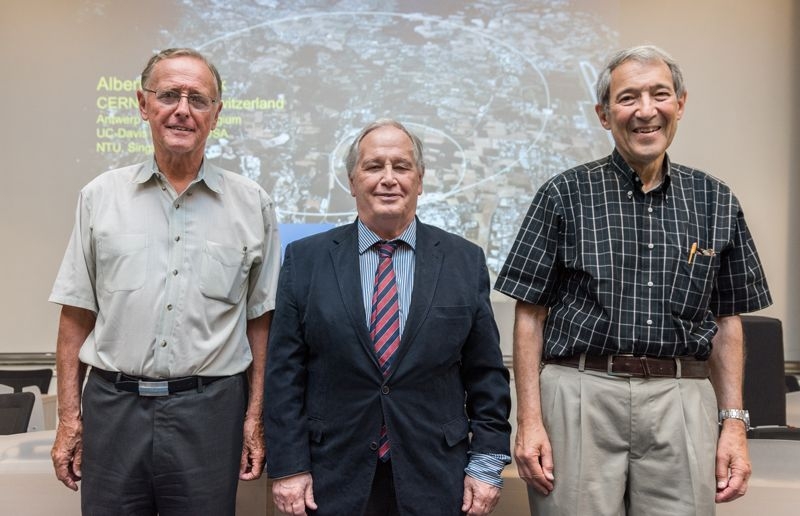Speculative ‘supergravity’ theory wins US$3-million prize

Peter van Nieuwenhuizen, Sergio Ferrara and Dan Freedman (left to right, in a picture from 2016) received a Breakthrough Prize for creating supergravity theory.Credit: CERN
Three physicists honoured for theory that has been hugely influential — but might not be a good description of reality.
Whether the theory of supergravity, an attempt to unify all the forces of nature, is a true description of the world still hangs in the balance more than 40 years after it was proposed. Nonetheless it has now nabbed its founders one of the most lucrative awards in science: a shared US$3-million Special Breakthrough Prize in fundamental physics.
Supergravity1 was devised in 1976 by particle physicists Sergio Ferrara of CERN, Europe’s particle-physics laboratory near Geneva, Switzerland; Daniel Freedman of the Massachusetts Institute of Technology in Cambridge; and Peter van Nieuwenhuizen of Stony Brook University in New York. The selection committee that awarded the prize chose to honour the theory, in part, for its impact on the understanding of ordinary gravity. Supergravity also underpins one of physicists’ favourite candidate ‘theories of everything’, string theory. The latter asserts that elementary particles are made of tiny threads of energy, but it remains unproven.
See full story